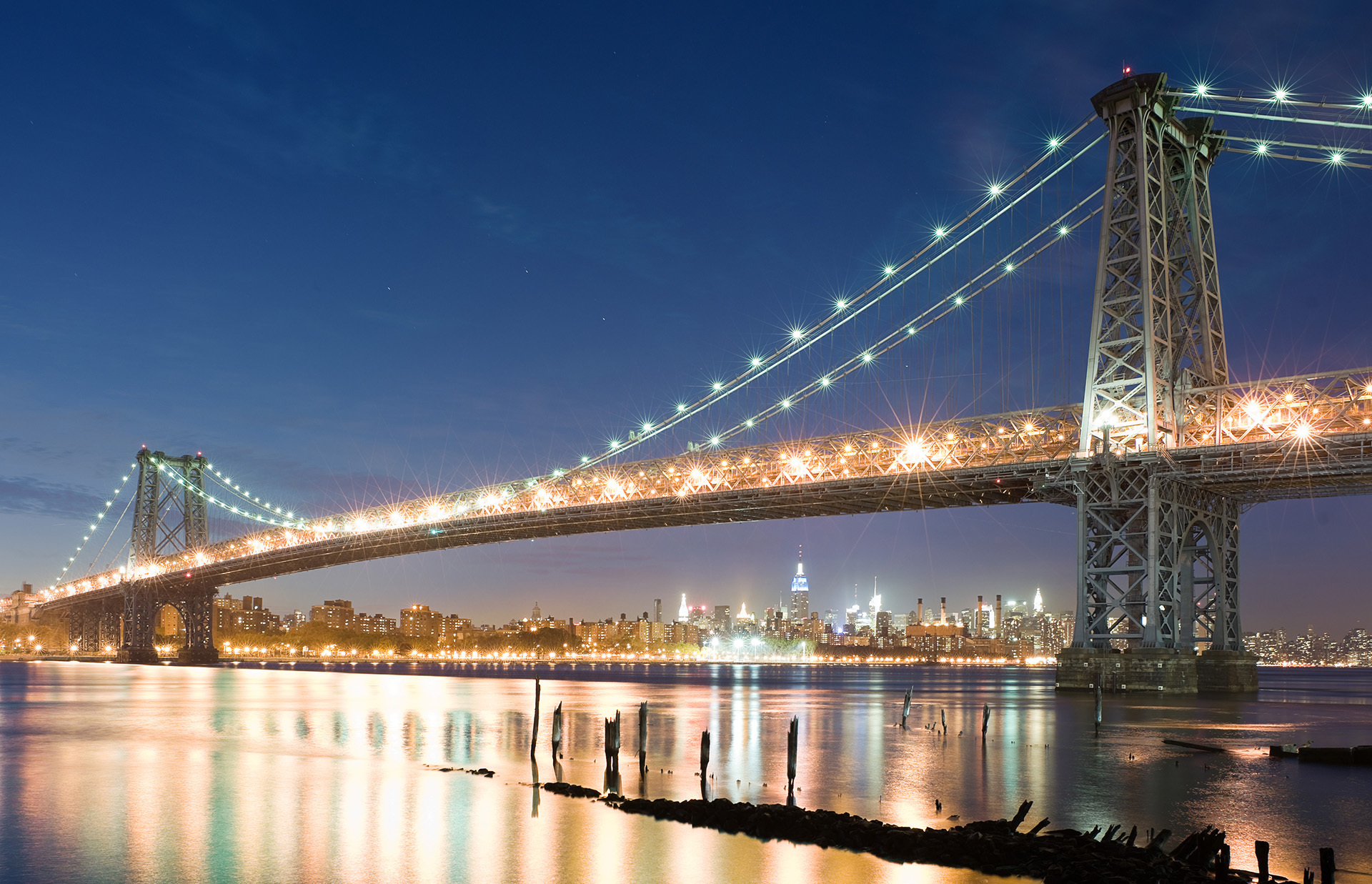Williamsburg Bridge
Then
The need for a second bridge across the East River was apparent soon even before the Brooklyn Bridge opened in 1883. In November, 1896 work began on the Williamsburg Bridge with Leffert L. Buck as the chief engineer. Cost was a major consideration, and its design reflects this: only the main span is held up by suspender cables, and the approach sections of the bridge are supported by steel arches.
The bridge is often criticized for its lack of aesthetic appeal; Gustav Lindenthal (who went on to engineer the Hell Gate Bridge) took over as chief engineer in 1902 and had “serious reservations about the design and appearance of the bridge” (nycroads.com).
The bridge opened on December 19, 1903, and elevated trains began running on the bridge in 1908. The suspension span, at 1,600 feet (four feet longer than the Brooklyn Bridge’s), was at the the longest in the world; the bridge held the record until the Bear Mountain Bridge opened in 1924.

Williamsburg Bridge, 2011
Now
Soon after it opened the bridge became problematic: the deck sagged under traffic so it was strengthened and more supports were added. During the 1960s, rust from the bridge reportedly began falling on pedestrians on the walkways. The walkways were then closed in the 1970s, following the mugging of a maintenance worker.
By the 1980s, the bridge was in such a deteriorated state it had to be closed to traffic in April 12, 1988, after corrosion was found in a floor beam. It remained closed for nearly two months while emergency repair work was done. Proposals were made for both rehabilitation and replacement; rehabilitation began in 1991 and involved major reconstruction efforts by the Department of Transportation.
The bridge’s centennial was celebrated in 2003, and it was designated a National Historic Civil Engineering Landmark in 2009.